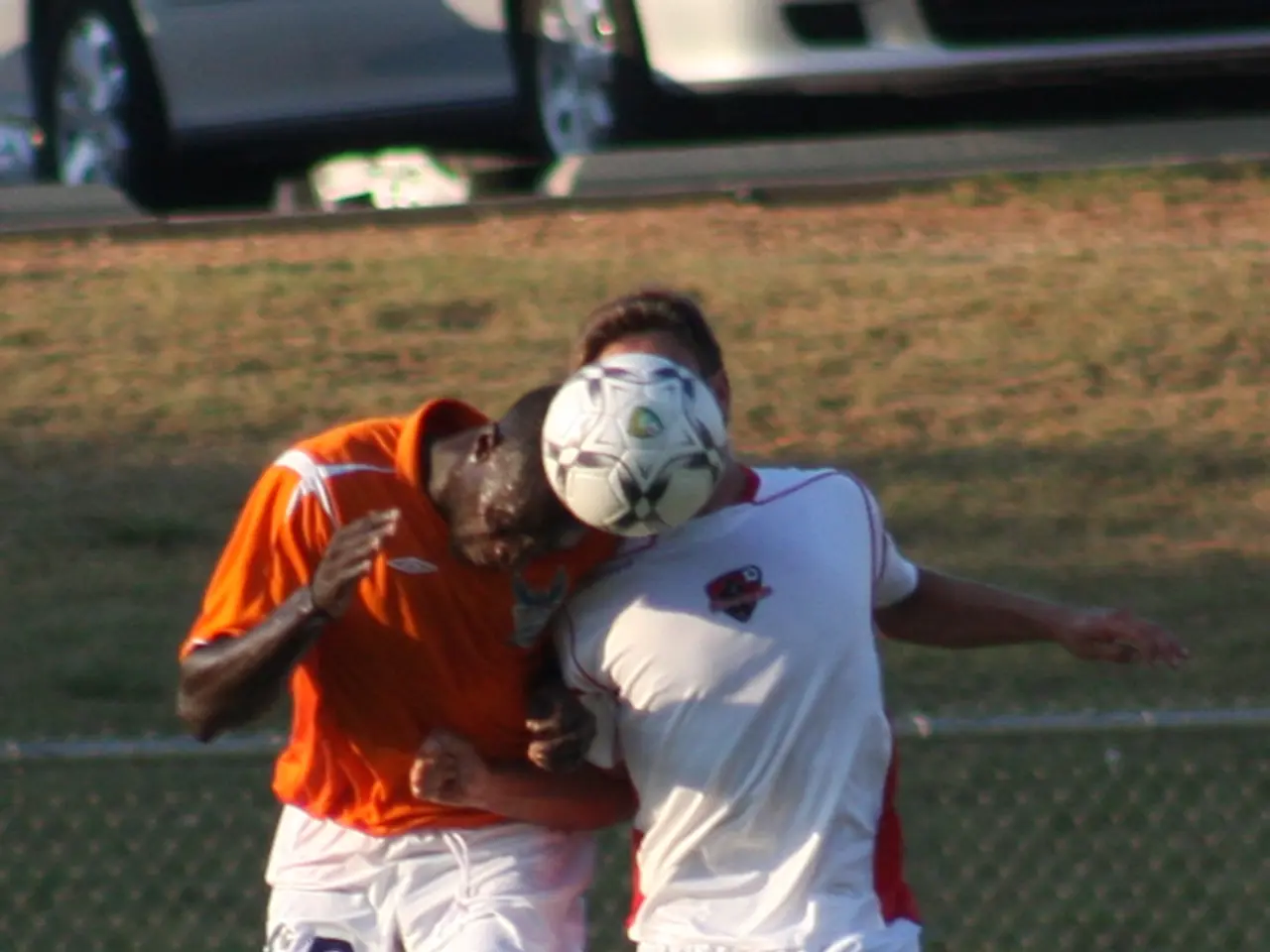Safety Concerns in Soccer: How Risky Is the Sport?
Heading in Soccer: A Look at the Risks and Precautions
Heading, a common technique in soccer, involves a player intentionally hitting the ball with their head. While it is a legal technique to pass, shoot, or clear the ball, it presents a risk of head and brain injury.
The header ball rule in football (soccer) allows players to use their heads, as long as it is done safely without dangerous play such as elbowing or headbutting. However, repeated subconcussive injuries can accumulate and cause brain damage over time, potentially leading to chronic traumatic encephalopathy (CTE).
CTE is a progressive neurodegenerative disease associated with repetitive head trauma. Symptoms of CTE include poor self-control, impulsive behavior, memory issues, impaired attention, trouble planning and doing tasks (executive dysfunction), among others. CTE has been seen in athletes who play other contact sports like wrestling, football, and ice hockey, and more specific research is needed to understand how soccer is linked to CTE.
To head a ball, a player needs to brace their neck muscles and move their whole body in one swift motion. During practice, soccer players may gently head a ball repeatedly, but in a competitive setting, they usually head the ball with more impact. This increased force can lead to concussions, a type of traumatic brain injury that can cause symptoms like headache, difficulty focusing, memory loss, confusion, blurry vision, dizziness, balance problems, nausea, sensitivity to light or noise, and more.
If a concussion is suspected, it's important to follow a concussion protocol, which includes rest, evaluation by a healthcare provider, and gradual return to play under a doctor's guidance. The United States Soccer Federation issued a mandate in 2016 prohibiting players 10 and under from heading and limiting heading practice for players 11 to 13.
Headgear like helmets minimizes impact and helps protect the head. Proper technique, including stabilizing the neck and torso, can also protect the head from injury. Symptoms of a head injury that require immediate medical attention include repeated vomiting, unconsciousness lasting longer than 30 seconds, worsening headache, lasting confusion, seizures, persistent dizziness, vision changes, and more.
On average, a player might head the ball during one game. Younger soccer players are more likely to get brain injuries from heading due to their lack of mastery of the technique and their developing brains. Approximately 1 in 5 soccer injuries are concussions.
Heading can be performed toward another player, across the field, or into the opponent's goal. Despite the risks, heading remains a crucial part of the game for many players. It is essential for players, coaches, and parents to understand the risks and take necessary precautions to protect players' health and safety.






